The crab pots are piled high at the fishing docks in Newport, Oregon. Stacks of tire-sized cages fill the parking lot, festooned with colorful buoys and grimy ropes.
By this time in July, most commercial fishers have called it a year for Dungeness crab. But not Dave Bailey, the skipper of the 14-metre Morningstar II. The season won’t end for another month, and “demand for fresh, live crab never stops,” Bailey says with a squinting smile and fading midwestern accent.
It’s a clear morning, and Bailey leads me aboard a white-and-blue crab boat, built in 1967 and owned by Bailey since 1992. He skirts a giant metal tank that he hopes will soon hold a mob of leggy crustaceans and ducks his tall frame into a cluttered cabin, where an age-worn steering wheel gleams beneath the front windows and a fisherman’s prayer hangs on the wall: “Dear God, be good to me. Your sea is so great and my boat is so small.”
The churning Pacific is just one challenge Bailey and his fellow crabbers must face. Recent years have also brought outbreaks of domoic acid, which renders crab unsafe to eat, and increasing incidents of humpback whales getting tangled in crab gear.
However, there’s another emerging problem that threatens not only Bailey’s livelihood but the very ecosystem that sustains it. I’ve come today to see a tool that could help crabbers manage.
On the counter in the kitchenette, amid bowls of instant noodles and tinned oysters, Bailey shows me a sturdy black tube, about 60 centimetres long, that fits neatly inside a crab pot. When submerged, the contraption measures oxygen levels in the water and, when retrieved, displays them on a separate box with a screen for Bailey to read. The box also beams the data back to scientists at Oregon State University.
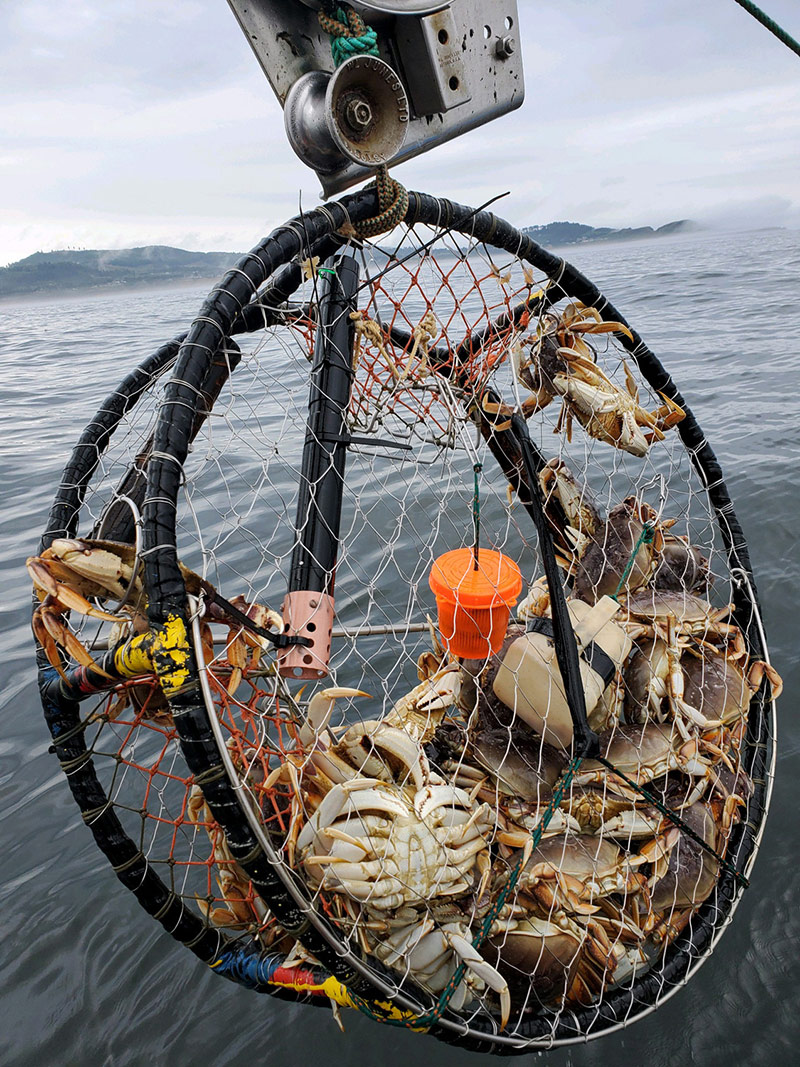
Most marine animals don’t breathe air, but they need oxygen to live, absorbing it from the water as they swim, burrow or cling to the seafloor. But lately, bouts of dangerously low oxygen levels — also known as hypoxia — have afflicted parts of the North American west coast, affecting critters from halibut to sea stars. These “dead zones” cause ecological disruption and economic pain for fishers like Bailey, who can’t sell crabs that have suffocated in their traps.
The phenomenon offers a preview of what climate change holds for many other parts of Earth’s oceans, which are already stressed by human impacts.
As seawater warms, it holds less oxygen. Warmer surface water also acts like a cap that prevents the gas from mixing from the atmosphere down into the deep. And rising air temperatures can shift weather patterns in ways that worsen the problem.
It’s a subtle but significant change. While well-oxygenated water contains about eight milligrams of oxygen per litre, hypoxic water holds less than two and can sometimes approach zero.
Overall, the world’s oceans have lost up to two per cent of their total oxygen content over the last 50 years, and scientists estimate that they could lose another two to four per cent over the next century. By 2100, some amount of climate-related oxygen loss could affect more than three-quarters of the ocean’s area, inflicting widespread damage to marine ecosystems and the billions of people who depend on them.
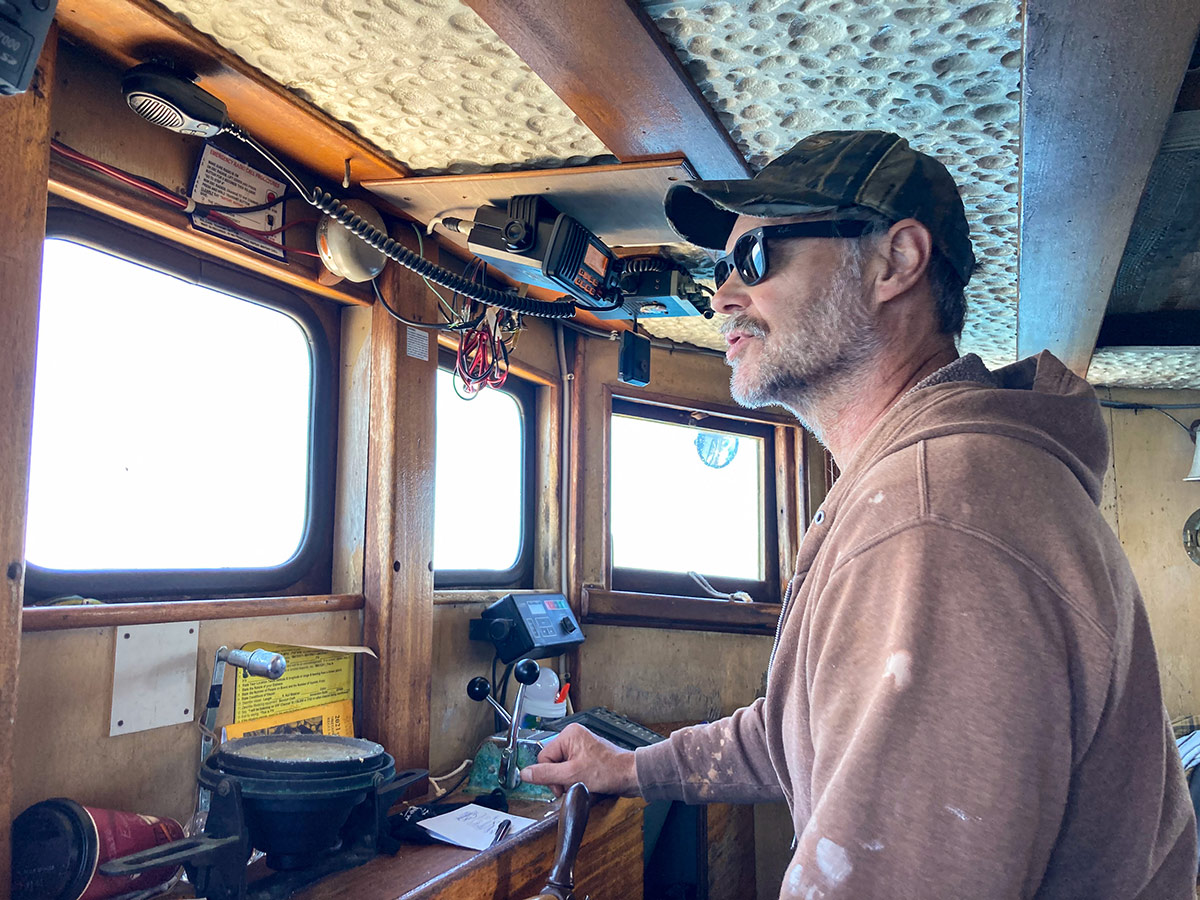
In places like the Pacific Northwest, there are few solutions except to dramatically reduce emissions of planet-warming greenhouse gases. And even then, fishers like Bailey will have to adapt to the changes already in motion — to learn, as we all must, to live in a profoundly altered world. That’s where the oxygen sensors come in. Researchers distributed them among volunteers from Oregon’s crab fleet to better understand hypoxia, and to help crabbers adjust to changing conditions.
Like many who’ve spent their lives at sea, Bailey is a keen observer of the ocean, attuned to its subtle patterns and mercurial moods. But until now, he’s had no way of knowing when oxygen levels dip low enough to kill crabs. “If we can get ahead of it, then we can get the gear out of there before they die,” he explains as we leave port and motor south over glassy swells. “That would be huge.”
‘I didn’t know if that was weird or not’
Francis Chan stumbled upon Oregon’s hypoxia problem almost by accident in 2002, soon after he moved from New York to work as a postdoctoral researcher at Oregon State University. He was planning his first cruise aboard the university’s research ship to measure ocean chemistry when he got a call from state officials about a series of strange reports: commercial fishers had pulled up pots of dead and dying crabs, and beachgoers had noticed dead fish and invertebrates washing up on shore. Underwater surveys found offshore reefs abandoned by rockfish, which divers found huddled in the shallows, labouring to breathe.
When Chan went to sea a few days later, he quickly found the culprit. Measurements revealed that coastal waters were nearly devoid of oxygen.
He recalls thinking, Does this happen all the time? “I didn’t know if that was weird or not.”
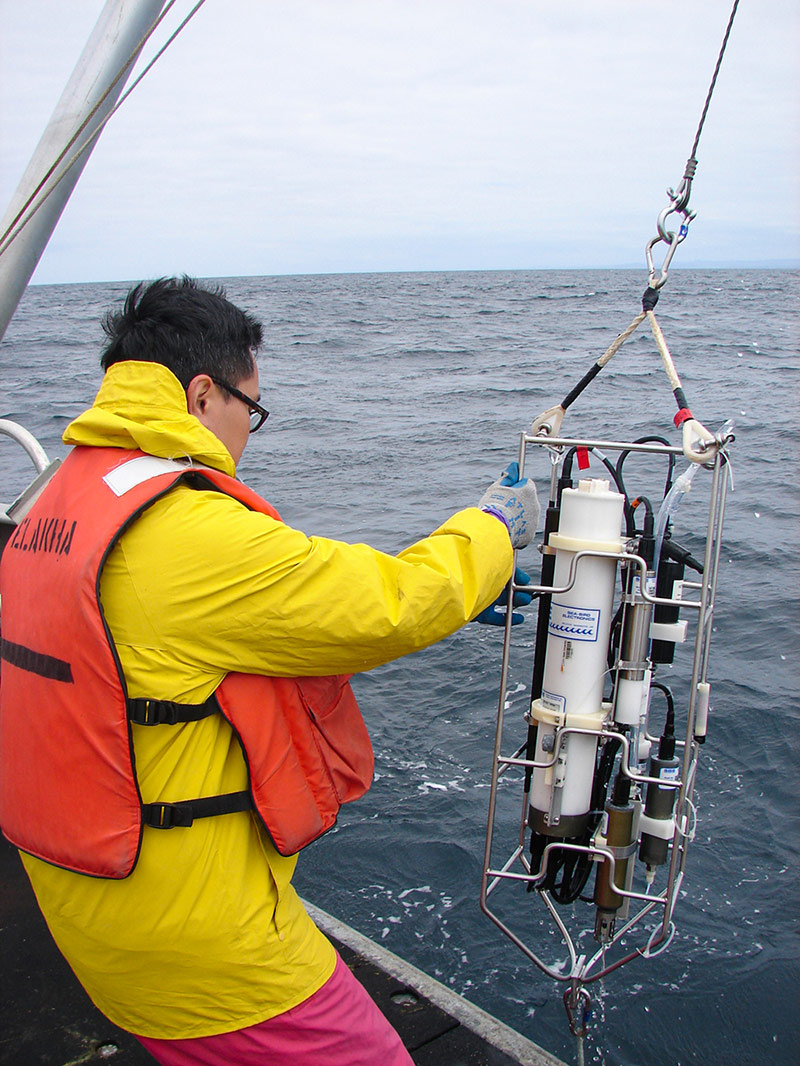
Hypoxic conditions sometimes plague enclosed seas and estuaries where nutrient pollution from fertilizer and wastewater runoff can feed blooms of algae. When the algae die, microbes break them down, using up oxygen in the process. But 50 years of oxygen measurements showed no evidence of hypoxia along Oregon’s coast, and geologic records suggest it was rare throughout the last few millennia.
Researchers did know that oxygen levels dipped every spring and summer, when a process called upwelling pulled naturally low-oxygen waters from the deep Pacific in toward shore. These waters carry nutrients that support the region’s spectacularly productive fisheries, and the drop in oxygen didn’t usually cause a problem.
But in the summer of 2002, Chan and his colleagues found that a surge of exceptionally nutrient-rich water triggered an enormous plankton bloom that drove oxygen levels to unprecedented lows as it decayed.
The event introduced a threat that has only grown under climate change. Shifting weather patterns have invigorated upwelling, and parts of the northeast Pacific — the source of upwelled waters — have lost almost a quarter of their oxygen content since 1950.
Since 2002, hypoxic waters have smothered the northeast Pacific coast nearly every summer, with oxygen levels dropping almost to zero in some years. The problem has also spread over the past half-century: at least 500 coastal locales worldwide have experienced hypoxia thanks to a combination of warming water and nutrient pollution. In the open ocean, the volume of low-oxygen water has quadrupled and now covers an area the size of the European Union.
Most organisms have two basic options when oxygen drops: flee or die.
Many immobile animals like clams perish, while mobile creatures often retreat to pockets of well-oxygenated waters near the surface or the shore. The result can be ecological chaos; hypoxia reduces biodiversity and shuffles species around, bringing them into contact with novel predators and prey.
A few organisms, like squid and jellyfish, tolerate low oxygen levels well and may enjoy a competitive advantage in a changing ocean. But other species have seen their habitat contract and their health decline. One study found that Baltic Sea cod with the highest lifetime exposure to hypoxia weighed 64 per cent less than healthy fish. Another projected that by 2100, oxygen loss and warming could halve the range of the West Coast anchovy — a forage fish that helps support entire ecosystems.
Even mild hypoxia may hurt sea life, for instance, by affecting eyesight.
“When you take the oxygen down, animals need more light to see and they don’t see as well,” says Lisa Levin, an oceanographer at Scripps Institution of Oceanography at the University of California San Diego.
Degraded vision could impede everyday activities like finding food and evading predators, says Levin, who’s involved in several international efforts to study and raise awareness of oxygen loss, including the United Nations-backed Global Ocean Oxygen Network, cleverly abbreviated GO2NE. Historically, hypoxia has gotten less attention from scientists and policymakers than ocean acidification and warming — the other marine impacts of climate change — even though a 2021 review of scientific literature found that oxygen loss has the most consistently negative impacts on marine organisms.
In Oregon, Chan kept studying the problem after that first episode in 2002, taking a job as a professor at Oregon State and helping lead a West Coast science panel and task force dedicated to hypoxia and ocean acidification, which tend to go together. Still, he felt frustrated that scientists couldn’t tell crabbers where and when hypoxic events would hit, or what degree and duration of hypoxia will actually kill a crab.
Researchers do issue forecasts of oxygen levels for the northeast Pacific coast, but they don’t have the resolution and accuracy most fishers need for day-to-day operations. The forecasting models are hampered by a lack of data on a phenomenon that can change over a few days or a few kilometres. Until recently, only a handful of scientific buoys and sporadic research cruises collected oxygen measurements, leaving much of the ocean unsampled.
“If we had a map, this is the perfect time to draw sea monsters,” Chan says.
So Chan and two other Oregon State scientists, Jack Barth and Kipp Shearman, teamed up with a former graduate student to develop small, low-cost oxygen sensors that could fit in crab pots. Crabbers cover a lot of water, and the researchers hoped they could help fill in the gaps in scientists’ knowledge.
If fishers could see the data right away, Chan thought, it might also help them cope with fluctuating oxygen levels. The U.S. National Oceanic and Atmospheric Administration agreed to fund the project, and Linus Stoltz, another Oregon State graduate student, began looking for partners in the crab fleet.
Dave Bailey was eager to help.
Troubling changes in the water
After three hours of cruising along steep, forested shore, we arrive at a long line of buoys marking Bailey’s first string of crab pots. His two crew members, who spent the trip playing cribbage and dozing in cramped bunks, snap into action.
Mitchell Whittier, a curly-headed rookie, pulls on rubber boots and overalls and heads out to prepare mackerel and clam for rebaiting the pots. Robert Werder, a veteran crabber of few words, steps into a pair of orange bibs, lights a cigarette, and takes his position beside a giant motorized pulley mounted on the side of the boat.
As Bailey steers past a buoy, Werder uses a wooden rod to hook the line connecting the buoy to the crab pot and slings it over the pulley. The pulley grips the rope and starts hauling it in, flinging sea gunk in every direction, including onto Werder’s impassive face, where a cigarette still dangles from his lips.
When the pot surfaces, the two men hoist it onboard, open the lid and sort the crabs, tossing back females, which are distinguishable by their beehive-shaped abdominal flaps. Small males go overboard and big males plunge into the holding tank. The rest tumble into a rectangular bin for measuring.
The bin reminds me of a sink full of dirty dishes that happen to have claws. Some of the crabs land right side up, their armoured orange legs crouched in a defensive pose, while others flail helplessly on their bumpy, purple backs. Most seem to accept their fate and quiet after a minute or so. I watch a few plucky animals clamber over their neighbors and attempt to escape. But every time, as if guided by some sixth sense, Whittier or Werder swipes them back in with a gloved hand.
The crew races to refill the bait boxes and shove the pot overboard before the boat reaches the next buoy. The process unfolds so fast that I miss the first few oxygen sensors when they come up inside pots.
That’s by design: Chan’s team took great pains to make sure the devices wouldn’t interfere with crabbing. They worked out the kinks in 2020 during a pandemic-addled pilot season; Stoltz even made YouTube videos to show fishers how to use the system, since he couldn’t visit them in person. This year, the researchers sent out 38 instruments on eight boats.
I finally get a look at a device in action when Whittier and Werder pause to install the spare sensor that Bailey showed me at the dock, strapping it deftly to the bottom of a pot. While underwater, it collects measurements every 15 minutes. During its brief return to the surface, it uploads the data to the deck box, which displays a graph of oxygen levels and water temperature.
Or that’s the idea, anyway. Though I keep my eye on the screen all afternoon, nothing appears. There’s some kind of glitch and the data doesn’t transfer until Bailey’s next fishing trip.
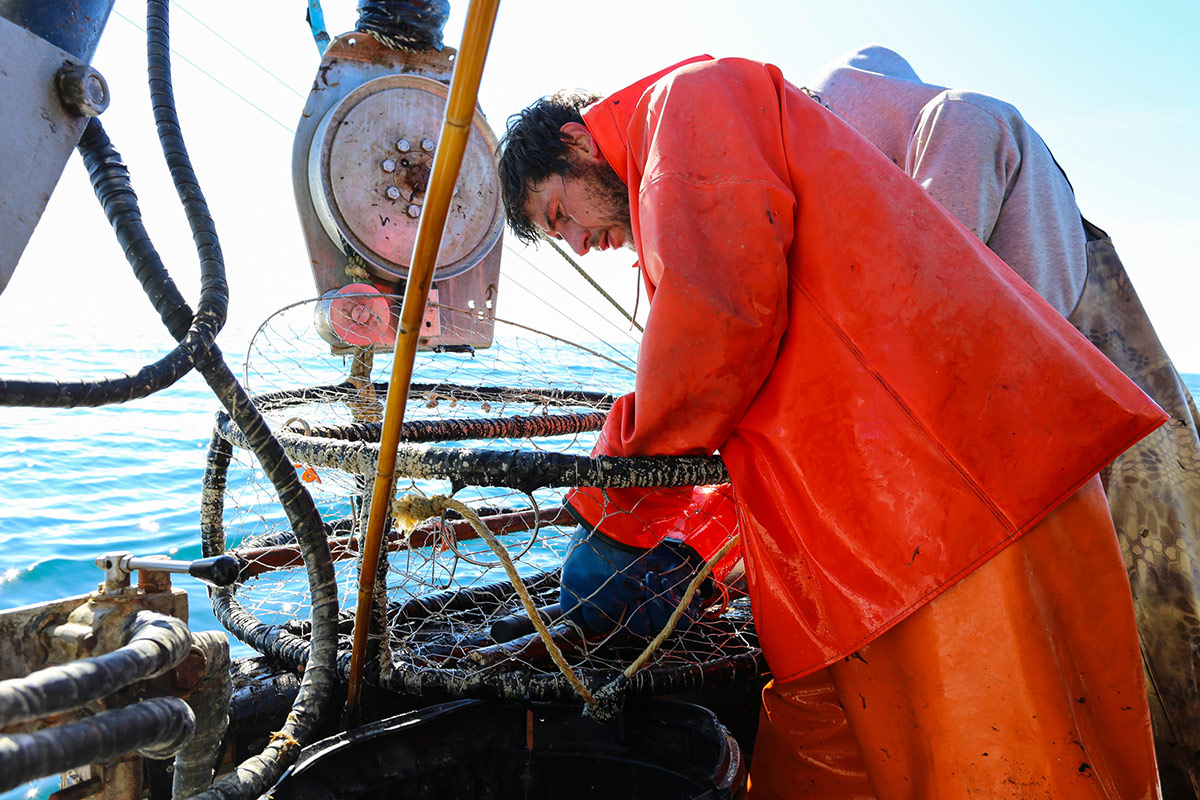
The crew, meanwhile, has other concerns. After a late start and a pulley malfunction, it’s past 7 p.m. and they’re not yet a quarter of the way done. The pots bring up plenty of crabs. But Whittier and Werder can only keep males with shells larger than 16 centimetres across — about the length of a $5 bill. And as they measure the crabs with metal calipers, it becomes clear that most fall short. Whittier looks despondent as he throws back the majority of their catch.
Bailey has also noticed troubling changes in the water. When we reached the second string of pots, the sea turned murky and brownish-red.
“This is like the setup for a dead zone,” Bailey observed. Later, a preliminary look at data from another nearby sensor will reveal that oxygen levels in the waters below us flickered close to zero.
What can we do to support resilience?
Up close, the realities of a dead zone are hard to watch. In 2017, a camera operated by Oregon fisheries officials captured a dozen crabs suffocating inside a research pot. In the footage, the water turns cloudy and the crabs become agitated, then subdued. A few try to crawl over their companions, as if looking for an escape, but the rest lie still except to wave a wan leg every now and then. Within a week, all are dead.
When hypoxia strikes, crabs trapped in pots may be doomed, but scientists don’t know whether their free-roaming counterparts can outrun a similar fate.
“That’s the million-dollar question,” says Caren Braby, marine resources program manager for the Oregon Department of Fish and Wildlife and co-chair of the state’s ocean acidification and hypoxia council.
Conventional wisdom says they should have no trouble; crabs can travel a few kilometres a day. But researchers have documented crab die-offs that appear linked to hypoxic events. During a severe episode in 2006, underwater surveys showed lifeless crabs strewn across the ocean floor. There were so many, they looked “like jelly beans in a jar,” a state official told the Oregonian.
Mass stranding events also suggest that low-oxygen conditions can develop fast enough to take many animals by surprise, says Jennifer Hagen, the marine policy adviser for the Quileute Tribe in La Push, Washington, which recently established its own oxygen monitoring station to track hypoxia in tribal fishing waters. “If you look at what species wash up on the beaches, it’s fast-moving and slow-moving species,” Hagen says.
Such devastation underscores the need to shore up ecosystems against oxygen loss and other environmental changes, says Chan.
“We know, as a society, how to erode resilience. We do that really, really well,” he says. “Let’s change course. Let’s think about, What are things we can do to support resilience?” That could mean expanding marine protected areas, which may help species weather environmental stressors by removing fishing pressure, or developing fishing regulations to ensure that animals can survive and reproduce.
The Dungeness crab fishery has already established size and sex requirements in an effort to support a sustainable population, and in 2018, the Quinault Indian Nation in Washington even closed crab season early because of hypoxia. Protecting adults during low-oxygen episodes may help buttress the long-term health of the population, according to a recent study.
Braby says researchers will learn more over the next decade about whether the animals are adapting or succumbing to hypoxia, and by extension, how one of the most lucrative fisheries on the West Coast will fare.
Already, some see worrying signs. In 2021, Oregon’s crab catch came in well below average, perhaps because of severe hypoxic events in 2017 and 2018, says Tim Novotny, the communications manager for the Oregon Dungeness Crab Commission. (On the other hand, 2022 has been a banner year.)
Bailey has no illusions about what lies ahead. As a crabber who fishes late into the season, when hypoxia peaks, he’s already lost income and struggled to keep a crew when there’s no crab to sell. The episodes also take an emotional toll, he says.
“There’s nothing sadder than pulling up a pot with dead crabs in it.”
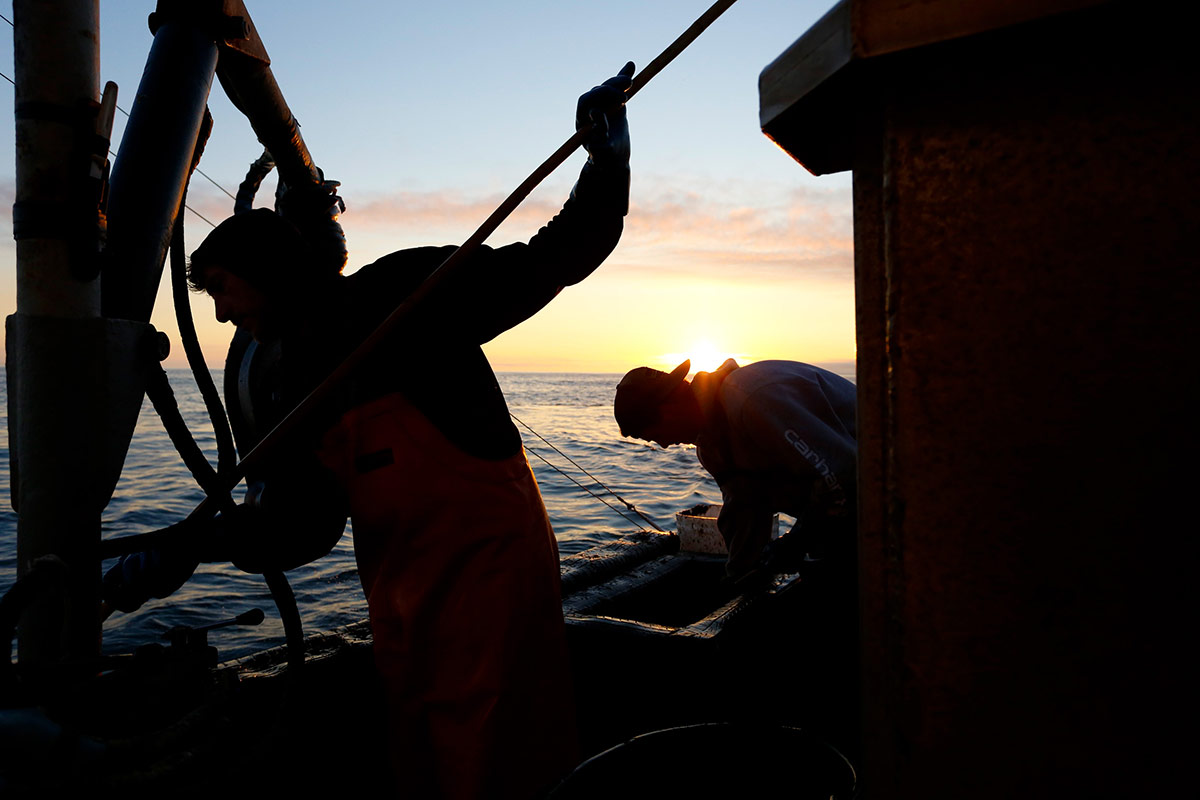
The oxygen sensors offer a glimmer of hope, however faint, for fishers inundated with bleak news about the state of the ocean.
“They hear a lot about the negative things,” Braby says. “They don’t hear a lot about what they can do in response.”
Perhaps, armed with better data, crabbers can stay a step ahead of changing conditions. Perhaps this is what adaptation looks like: empowering people, one by one, to navigate an uncertain future.
But that’s a concern for another day. Aboard the Morningstar II, the crew doesn’t find any dead crabs, and the holding tank finally starts to fill as darkness falls. Late into the night, Bailey steers the boat through hanging sheets of moonlit mist. “Werewolf fog,” he calls it. Seabirds explode into view as they cross the running lights and settle on the undulating sea. They look a lot like the buoys Bailey searches for in the murk; he’s spent whole nights chasing them in circles.
The crew starts the last string of pots at 3 a.m., and I can tell from the way they move that Whittier and Werder are pleased. Fewer crabs go overboard. Werder lets out a hoot when they finish the final pot.
They caught 430 crabs in all, about 400 kilograms, which Bailey will sell — live — for about US$20 apiece. After 16 gruelling hours at sea, he announces, “We’re done.” Then he points the bow north and lets the autopilot guide us home.
Hakai Magazine is an online publication about science and society in coastal ecosystems. Read more stories like this on their website.
Read more: Science + Tech, Environment




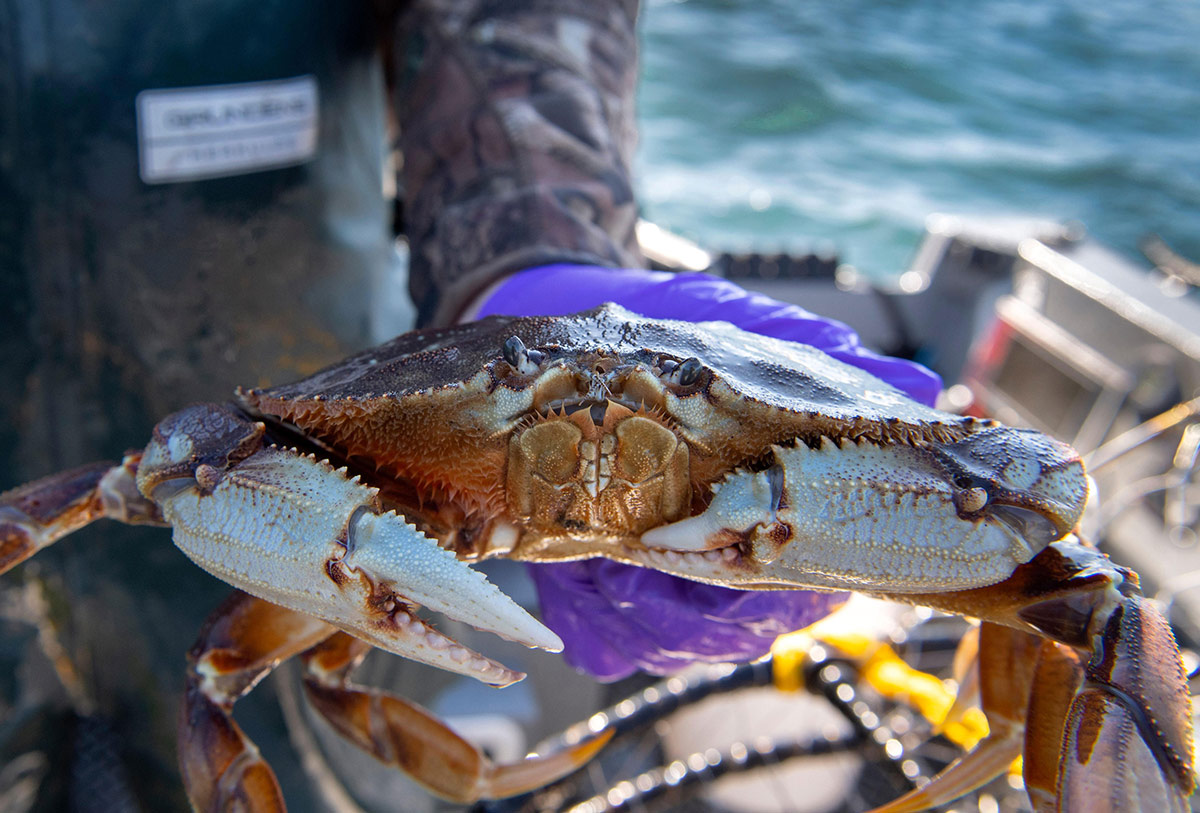












Tyee Commenting Guidelines
Comments that violate guidelines risk being deleted, and violations may result in a temporary or permanent user ban. Maintain the spirit of good conversation to stay in the discussion.
*Please note The Tyee is not a forum for spreading misinformation about COVID-19, denying its existence or minimizing its risk to public health.
Do:
Do not: